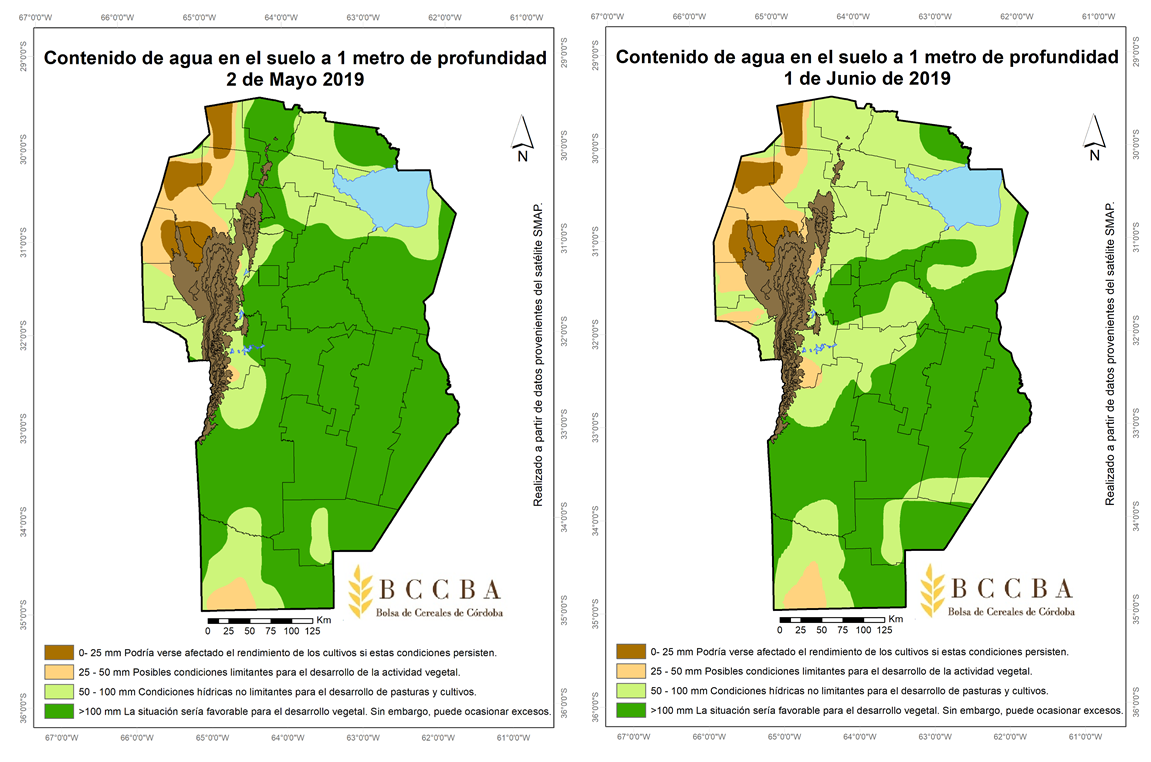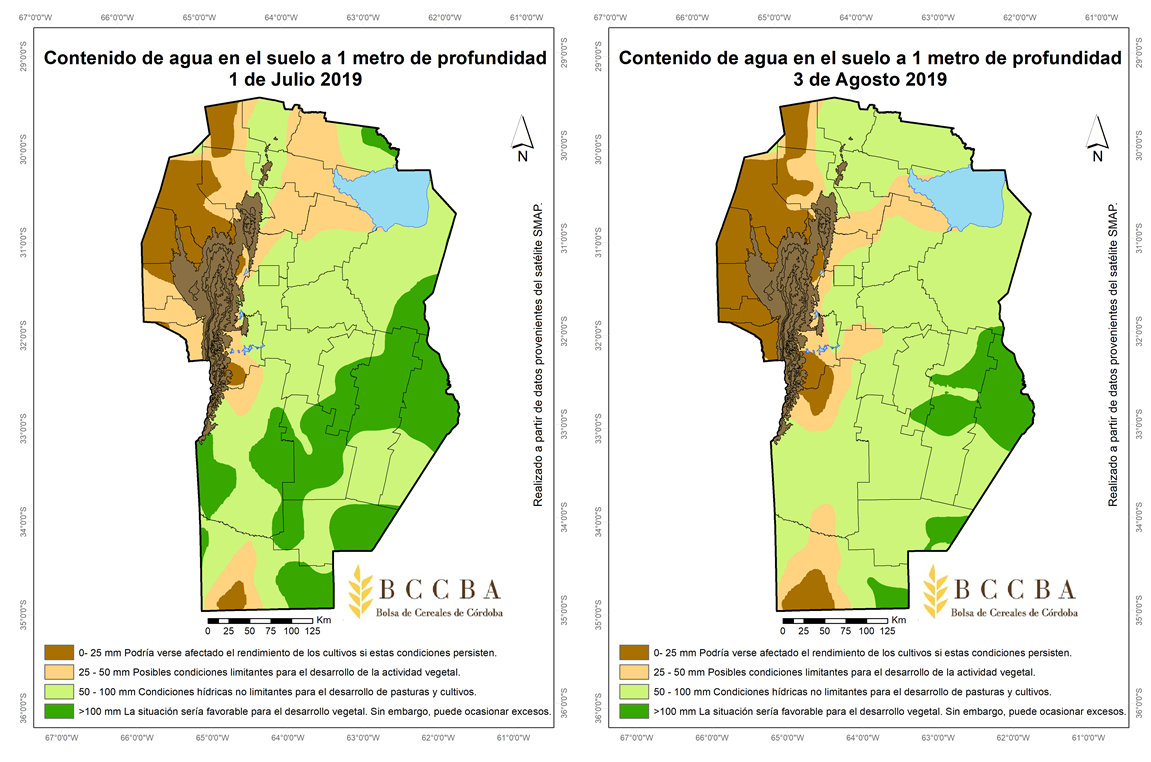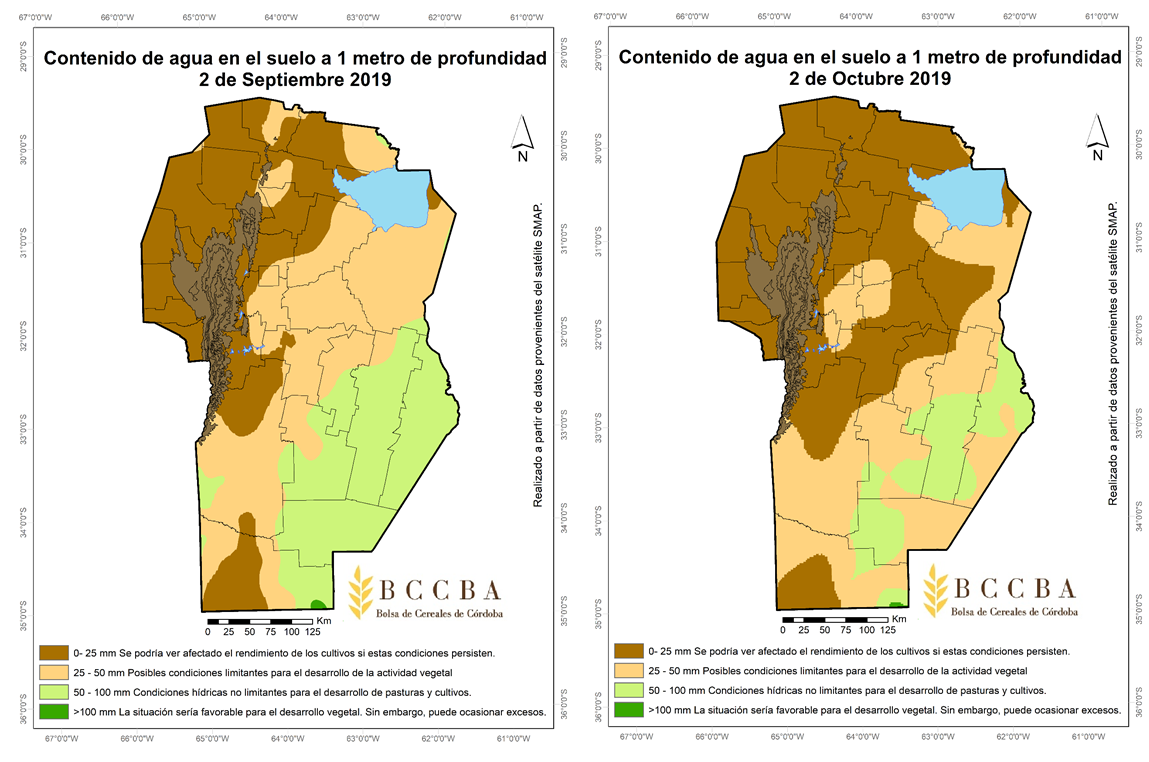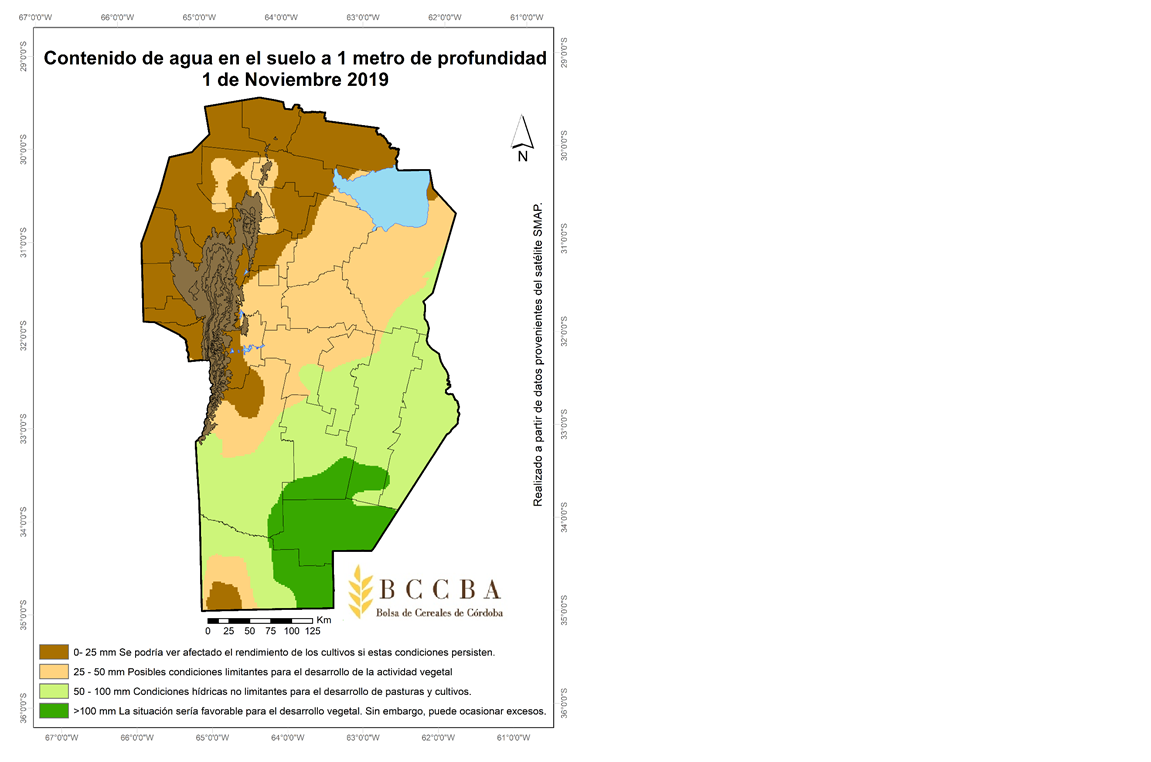
The climatic behavior during the 2019-2020 wheat season is described at the subregional level. The description of the behaviors allows the reader to have a clear idea of what the evolution was in each subregion, and the agronomic considerations are described in another section of this publication.

The 2019/2020 campaign turned out to be the most important sowing: 22% more were sown than the 2018/2019 campaign. The core region ended up contributing 35% of the total Argentine wheat, obtaining the highest volume in the region's wheat history.
1.8 M ha were planted and the Google Earth Engine tool was used to carry out the area study, an open source online platform for viewing and processing satellite images. 4,000 georeferenced points were used. The classification was done by means of a script extracting images from the Sentinel-2 satellite.
At the end of July 2019, engineers in Pergamino commented that wheat was being a phenomenon. "Many producers who did not make wheat this year started to plant 30% of their fields, and those who had been doing so also planted more," they stated. And the satellites confirmed it. The yields of the entire region were very even, around 40 qq / ha. The effects of the great wheat bet is evident, the high production technological package was the fundamental key to obtain these yields with an autumn and spring almost without rain.
The campaign began with good rains in autumn, which allowed the sowing of 1.8 M ha without limitations. This was very important, because the cold quarter left more than 100 days without significant rains in the region.
After a water deficit in August and with a month of September of few rains in the east-central part of the country, only between 10 and 50 mm fell, the wheat fulfilled its stages of tillering, stemming and heading. September seemed to impose a steep drop to yields due to the lack of water in bloom. But the recovery of the rains came after the third week of October. This allowed to have the necessary water to stop the fall.
September again manifested a dry pattern that dominated much of the west, north and center of the Pampas region. November continued with a shortage of water despite some rains in the first days.
In December, with spring closing in, the rains were well below historical averages. The east of Cordoba and the south of Santa Fe were the ones that received the lowest millimeter films. The last of the December events, the one that followed the rains of kings, at the beginning of January, affirmed the hydric recovery of the Pampean region, with 100% of the harvest completed.
Wheat surprised at the end with better yields, achieving a great season marked by water scarcity during the development of its cycle. The intense winter frosts also broke out but did not cause major problems. If there were problems due to hail that caused unprecedented losses: of the almost 120,000 hectares lost in the.

The climatic behavior during the 2019-2020 wheat season is described below. The maps of available water in the soil were generated from information from the Soil Moisture Active Passive (SMAP) satellite; that measures the humidity in the first centimeters of the soil using an L-band radar that it carries on board and is capable of estimating depths of up to 1 meter using the modified Palmer model of soil moisture.
Climatic description.
By analyzing the temperatures of the equatorial Pacific Ocean, it can be confirmed that the year 2019 began with a warm phase; coinciding with the characteristics of an “El Niño” event. Rainfall during the first months of the year was above normal in much of Córdoba, favoring the recharge of useful water in the soil profile at the time of beginning the sowing of winter crops for the month of May.
For the June / July / August quarter, the northern departments of Córdoba recorded accumulated rainfall above normal, in other areas a behavior close to the historical average was observed. August was the driest month, where rainfall records were 0 mm in 70% of the stations according to the network of meteorological stations of the Córdoba Cereal Exchange and only 30% recorded between 1 and 4 mm.
Average temperatures in the June / July / August quarter were within normal values. However, in the month of August, the wheat was going through its tillering and staining stage, and some meteorological frosts were recorded (absolute minimum temperatures below 0º C) that caused symptoms of leaf-tip burning.
The September / October / November quarter registered a marked water deficit. Therefore, winter crops developed their critical period with non-optimal water reserves in a generalized way. From the thermal point of view, the average temperatures of September and October were within normal values, and no late frosts were evident.
The water situation in general was not entirely unfavorable for the development of wheat in the province of Córdoba; Due in part to the fact that good water content was available in the soil at the time of sowing and it was not a campaign that was characterized by generalized thermal stress, since temperatures were within normal in much of the crop cycle . The weather conditions in the harvest window allowed the work to be carried out at a good pace, and by the end of November the last batches with wheat were being finished.











